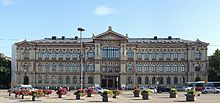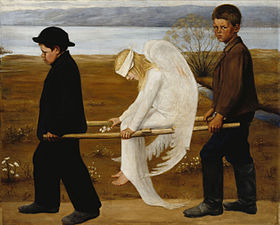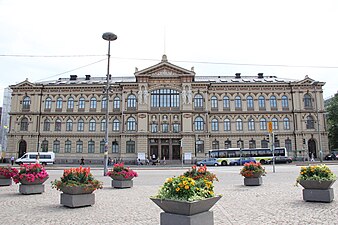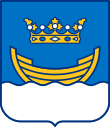
Akseli Gallen-Kallela was a Finnish painter who is best known for his illustrations of the Kalevala, the Finnish national epic. His work is considered a very important aspect of the Finnish national identity. He finnicized his name from Gallén to Gallen-Kallela in 1907.
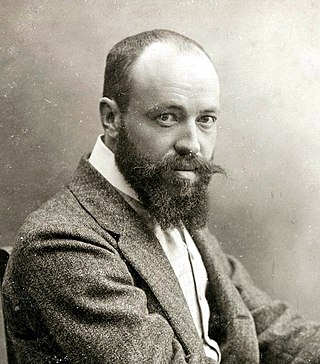
Hugo Gerhard Simberg was a Finnish symbolist painter and graphic artist.
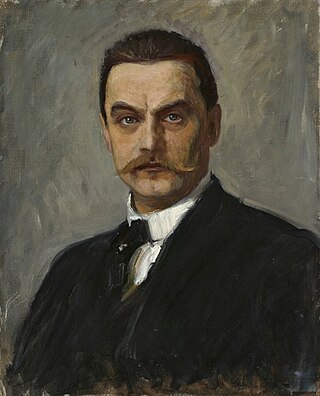
Albert Gustaf Aristides Edelfelt was a Finnish painter noted for his naturalistic style and Realist approach to art. He lived in the Grand Duchy of Finland and made Finnish culture visible abroad, before Finland gained full independence. He was considered the greatest Finnish artist of the second half of 19th and the first half of the 20th centuries, and one of the most prominent contributors to the Golden Age of Finnish Art.

Erik "Eero" Nikolai Järnefelt was a Finnish painter and art professor. He is best known for his portraits and landscapes of the area around Koli National Park, in the North Karelia region of Finland. He was a medal winner at the Paris Exposition Universelle of 1889 and 1900, taught art at the University of Helsinki and was chairman of the Finnish Academy of Fine Arts.

Havis Amanda is a fountain and a statue in Helsinki, Finland by the sculptor Ville Vallgren (1855–1940). The work was modelled in 1906 in Paris, and erected at its present location at the Market Square in Kaartinkaupunki in 1908. Today it is recognized as one of the most important and beloved pieces of art in Helsinki.

Aino Ackté was a Finnish dramatic soprano. She was the first international star of the Finnish opera scene after Alma Fohström, and a groundbreaker for the domestic field.

Aino is a figure in the Finnish national epic Kalevala.

Carl Wilhelm "Ville" Vallgren was a Finnish sculptor. His best-known work is the statue Havis Amanda in Helsinki.
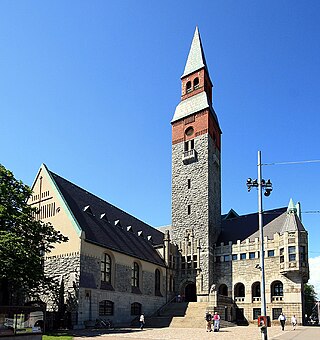
The National Museum of Finland is a museum in Helsinki presenting Finnish history from the Stone Age to the present day, through objects and cultural history. The Finnish National Romantic style building is located at Mannerheimintie 34 in central Helsinki and is a part of the Finnish Heritage Agency, under the Ministry of Culture and Education.

Finnish National Gallery is the largest art museum institution of Finland. It consists of the Ateneum, an art museum; Kiasma, a contemporary art museum; and the Sinebrychoff Art Museum, a historic house and art museum.

The Wounded Angel is a painting by Finnish symbolist painter Hugo Simberg. It is one of the most recognizable of Simberg's works, and was voted Finland's "national painting" in a vote held by the Ateneum art museum in 2006. In a similar 2013 vote held by Nordic Moneta, it was voted second most important.
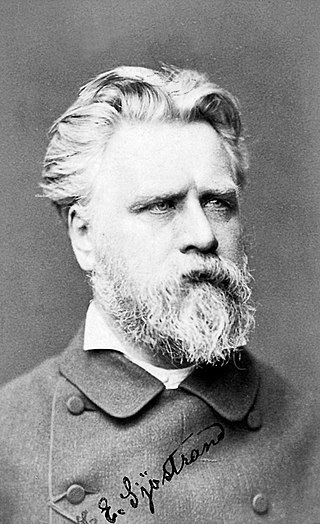
Carl Eneas Sjöstrand was a Swedish sculptor who worked for over 40 years in the Grand Duchy of Finland.

The Old Student House is the former student house of the Student Union of the University of Helsinki, located in central Helsinki, Finland, near the crossing of Aleksanterinkatu and Mannerheimintie.
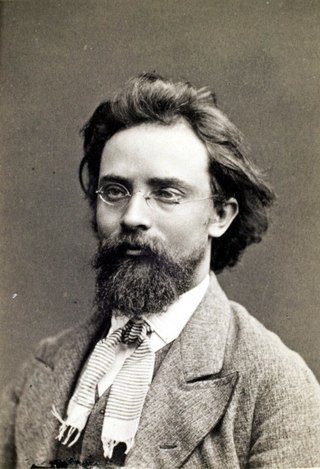
Walter Magnus Runeberg was a Finnish neo-classical sculptor. He was the son of Finnish national epic poet Johan Ludvig Runeberg.

The Free Exhibitions were art exhibitions organized in Helsinki, Finland in the years 1896, 1898, 1900 and 1903. They were labeled "free" because they did not have a jury to decide whose paintings or sculptures could be on display as other art exhibitions in Finland did at the time. These exhibitions were organized by the artist Sigurd Wettenhovi-Aspa (1870–1946), who also had the largest number of works displayed in all of the Free Exhibitions. The artist Torsten Wasastjerna was also involved in the organization of the first two exhibitions. The exhibitions attracted attention among the press and public and even a few of Finland's most famous artists, including Eero Järnefelt and Walter Runeberg, participated in one of them. However, the exhibitions gradually lost their popularity, and at the last exhibition in 1903, Sigurd Wettenhovi-Aspa and his brother Ragnar Asp were the only two exhibitors.

Finnish art started to form its individual characteristics in the 19th century, when romantic nationalism began to rise in the autonomous Grand Duchy of Finland.

Luxembourg Gardens, Paris is an oil painting completed in 1887 by the Finnish artist Albert Edelfelt depicting a scene in the Jardin du Luxembourg in Paris, France. The painting has become a kind of symbol of Edelfelt and the whole of Finnish art, at a time when Paris was the center of the art world. It is one of Edelfelt's larger paintings and a major en plein air painting.

Hilda Flodin was a Finnish artist. She worked in a variety of media, but in the first part of her career primarily sculpture and etchings, later primarily painting, especially portraits.
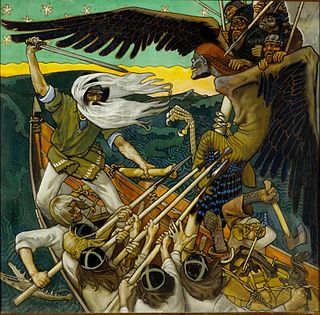
The Golden Age of Finnish Art coincided with the national awakening of Finland, during the era of the Grand Duchy of Finland under the Russian Empire. It is believed to span an era from the late 19th Century to the early 20th Century, approximately 1880 to 1910. The epic poetry form known as Kalevala, developed during the 19th Century, provided the artistic inspiration for numerous themes at the time, including in visual arts, literature, music and architecture; however, the "Golden Age of Finnish Art" is generally regarded as referring to the realist and romantic nationalist painters of the time. Notable figures of the time include Akseli Gallen-Kallela, Pekka Halonen, Albert Edelfelt, Jean Sibelius, Eino Leino, Helene Schjerfbeck, Emil Wikström, Eero Järnefelt and Eliel Saarinen.

In 2016 and 2017, the New Valamo Monastery in Heinävesi, Finland, attracted scandal for "selling mediocre works of art from a 'mysterious family' at outrageously high prices" and selling art forgeries to the public. Criminal convictions were brought against the main perpetrators.
